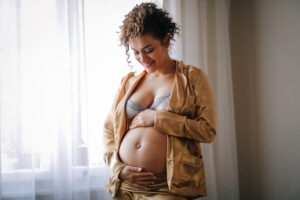Up Your Odds of Getting Pregnant By Pinpointing Your Peak Fertility Days
When you’re trying
not to get pregnant it may seem like every day is a risky one to have sex. When you’re trying
to get pregnant it may seem like nothing works!

When are the best days in your menstrual cycle to have intercourse or artificial insemination if you want to have a baby? There are a number of different ways to calculate your
peak fertility days. Let’s look at the science behind your most fertile days.
It’s All About Ovulation
To get pregnant, you need to have intercourse or artificial insemination on the days before you ovulate or the day of ovulation. Your peak days for fertility are the day of ovulation and the five days right before you ovulate. For the average woman, these are days 10 to 17 of her 28-day cycle, with day 1 being the day your period starts. You may have heard that ovulation happens on day 14 of your cycle. But women can ovulate as early as day 10 or as late as day 20. The problem is, many women’s cycles are not average. They may be longer or shorter than 28 days, or the cycles may be irregular. Ovulation doesn’t necessarily happen like clockwork.For many years people used the rhythm method to avoid pregnancy, but it can likewise be used to determine when you’re most likely to ovulate. The rhythm method involves tracking your menstrual periods for six to 12 cycles, recording the day your period starts and the day it ends. Subtract 18 from the total number of days in your shortest cycle. This represents the first fertile day of your cycle. Then subtract 11 from the total number of days in your longest cycle. This will be the last fertile day of your cycle. Got that? This method is less likely to work if your periods are irregular. And it is not reliable at preventing pregnancy, as many women can tell you, so its accuracy is suspect.There are several online tools for calculating your peak fertility period using the first day, last day, and length of your period.Many kits are available over the counter at your local drugstore to predict when you are ovulating. These kits all measure the presence of luteinizing hormone (LH) in your urine, which is present when the egg is ripening, 24 to 48 hours before ovulation. The ovulation predictor kits require you to urinate on a stick for the week before you expect to ovulate. You know you are in a fertile period for one to three days when LH is detected.
Fertile Cervical Mucus
Research has shown that the best day to have intercourse to get pregnant is when you notice the most fertile cervical mucus. Fertile cervical mucus looks a bit like raw egg white and usually appears on the days before ovulation. The more slippery it is, the closer ovulation is. Cervical mucus helps the sperm swim along to its “target” and is a signal that ovulation is about to happen.
Basal Body Temperature
Another method to determine your fertile days is basal body temperature charting. Your basal body temperature is your temperature when you first wake up in the morning, before you get out of bed and start moving around. A woman’s body temperature increases by about half a degree when an egg is released, so charting your temperature can help you find the pattern of when you ovulate in your cycle. The change is so slight that you have to get a special thermometer. Basal body temperature has been shown by research to be less accurate than fertile cervical mucus, perhaps because many things can affect your body temperature, such as infection, stress, drinking alcohol, having a cold, or jet lag.
More Sex is Better Than Less
Perhaps the simplest method is just to have sexual intercourse two to three times a week, every week. No matter when you ovulate the odds are better that you’ll hit a fertile day if you have sex more often, and this lessens the pressure on both partners. Have you ever heard someone at your office say, “Tonight’s the night, her stick is blue”? Too much sharing, and maybe too much pressure!
Need More Help?
Whatever method you choose, if you continue to have difficulty getting pregnant, it may be time to consult a reproductive endocrinologist. A fertility specialist can determine why you’re having fertility problems and provide treatment to help you get the baby you want.
 When are the best days in your menstrual cycle to have intercourse or artificial insemination if you want to have a baby? There are a number of different ways to calculate your peak fertility days. Let’s look at the science behind your most fertile days.
When are the best days in your menstrual cycle to have intercourse or artificial insemination if you want to have a baby? There are a number of different ways to calculate your peak fertility days. Let’s look at the science behind your most fertile days.


